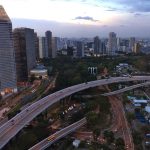In this second part of our condo buying guide, we look at the nuts and bolts of the whole procedure. How do you go about buying your right to higher maintenance fees and annoying management council meetings, and into a pool you’ll use once and never again? That’s right, this is where we work out the steps of going from HDB dweller, to condo honcho. Now you can really rub it in someone’s face at the next Chinese New Year reunion:
Image Credits: HDB pinnacle, Pixabay
Option 1: Move to a condo, while retaining your flat
If you’re a Singapore citizen – and not a Permanent Resident (PR) – you can retain your flat while also owning a private property, if you meet the Minimum Occupancy Period (MOP) for your flat. If you’re a PR, this is not an option at all. PRs must sell their HDB flat within six months of buying a private property, so skip to one of the other options below.
Now, Singapore citizens can retain and sublet their flat, when they meet certain conditions. The full list of requirements is here. But in brief, you need to make sure you:
- Don’t exceed the maximum number of sub-tenants. The maximum is four persons for one and two-room flats, six persons for three-room flats, and nine persons for bigger flats.
- Be prepared to pay the increased property tax
- Ensure that your subtenants are legal entries into Singapore, and that they abide by all the usual HDB rules (you’ll be responsible for what they do)
- The subtenants have leases of at least six months, and up to a maximum of 18 months (or 36 months for Malaysians)
- Your subtenants meet the non-citizen quota. Only eight per cent of your neighbourhood’s residents can be non-citizens, and only 11 per cent of your block can be non-citizens (Malaysians are exempted). You can check the current quota details for your flat here.
If you’re a Singapore citizen, but you’re not allowed to sublet your flat for whatever reason, you can still retain your flat while buying private properties. However, you must reside in your flat. You could, for example, buy a condo, and live in your flat while renting out the condo; but not the other way around.
Option 2: Buy a condo now, and then sell your flat later
If you choose to buy a condo before selling your flat, you should start by paying off your outstanding mortgage, if you have one. This is because your Loan to Value (LTV) ratio will be greatly reduced, if you buy a house while you have an outstanding mortgage.
Banks can provide a maximum LTV of up to 80 per cent (that is, you can borrow up to 80 per cent of your property price or valuation, whichever is lower). But if you have an outstanding mortgage, the LTV drops to 50 per cent (Subject to income assessment). For an LTV of 50 per cent would mean you need to fork out a jaw-dropping minimum of 25 per cent of the property price in cash.
Next, you need to focus on paying down existing debts. Your total loan repayments – inclusive of all loans, from car loans to the new home loan – are capped at 60 per cent of your monthly income. This is called the Total Debt Servicing Ratio (TDR). If you have outstanding debts, it will eat into your TDSR limit, and reduce the size of the loan you can take. It might be best to finish off any car loans, personal loans, credit card loans, etc. before trying to buy the condo.
Next, you’ll need to pay the Buyer’s Stamp Duty (BSD) of three per cent of the property price, and Additional Buyers Stamp Duty (ABSD) on your condo. For Singapore citizens, the ABSD is seven per cent of the property price for your second property, and 10 per cent on subsequent properties.
For PRs, the ABSD is 10 per cent of the property price on the second property, and 15 per cent on subsequent properties.
The ABSD will be refunded to you, if you sell your flat within six months of buying the condo (subject to IRAS ABSD tax remission rules). But here’s the important part that we need to stress:
If you cannot find a buyer for your flat within six months, you will forfeit the ABSD. So if you are buying the condo first, make sure you have plenty of prospective buyers lined up, before you sign the Option to Purchase (OTP) on your new home. If it looks like you can’t make the sale on time, you’d better consider other possibilities, such as seeing if you can sublet your entire flat (see option 1).
After all this, ensure that you have the minimum cash payment of five per cent of the condo. This is paid to receive the OTP (one per cent of the property price as a deposit), and then signing the purchase agreement (another four per cent). This initial five per cent is paid out within the span of one to two weeks, so you must have the cash ready. Your home loan won’t be disbursed soon enough to cover this amount.
After that, you can move into your condo, and start servicing your new mortgage. If you can’t service your new mortgage right away (e.g. you need your flat to be sold before you have the money), you can apply for a bridging loan. Speak to one of our mortgage experts at iCompareLoan, who can help you both the paperwork, as well as get you a lower rate. This is a free service.
Option 3: Sell your flat first, and then buy a condo later
You may choose to sell your flat before getting a condo, if you don’t want to feel rushed by the six month time limit.
After the buyer pays for your flat, the proceeds from the sale will first pay off your outstanding mortgage. After this, any cash used from CPF to pay for the flat has to be refunded, with accrued interest.
For example, say you used $50,000 from your CPF as the initial down payment on your flat. It has been seven years since you made this down payment. Now the interest rate of your CPF Ordinary Account (CPF OA) is 3.5 per cent, so after seven years the amount refunded to your CPF will be around $63,600.
Again, all CPF monies used must be refunded from proceeds of the sale. So if you used your CPF for both the down payment and the home loan / HDB loan repayments, both must be refunded with interest.
Any money left after all this can go into your bank account. After that, you can go ahead and buy your condo. You can pay up to 15 per cent of the condo’s price with your CPF, and you can again service the loan with your CPF OA. However, note that you must pay at least five per cent of the condo’s price in cash (as described in option 2). If you don’t have enough left after refunding your CPF, you may have to save for a while before buying.
Note that there is no resale levy as you are buying a private property. But you are, of course, subject to usual taxes such as the BSD, and you will have to meet the usual requirements for a home loan. We can help you obtain a lower interest rate bank loan, as well as take on the paperwork for you (all for free). Just contact us at iCompareLoan.
Next, we look at how to qualify for a home loan. Follow us on Facebook, and we’ll update you when the next part of this upgrader’s Condo buying guide series is out.
Or read about Costly Mistakes to avoid when upgrading from HDB to Private Condominium.







